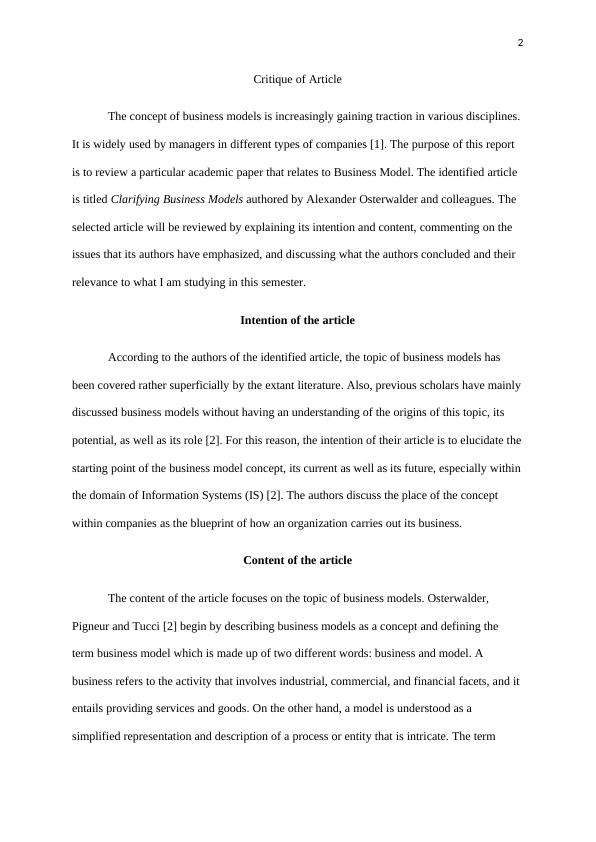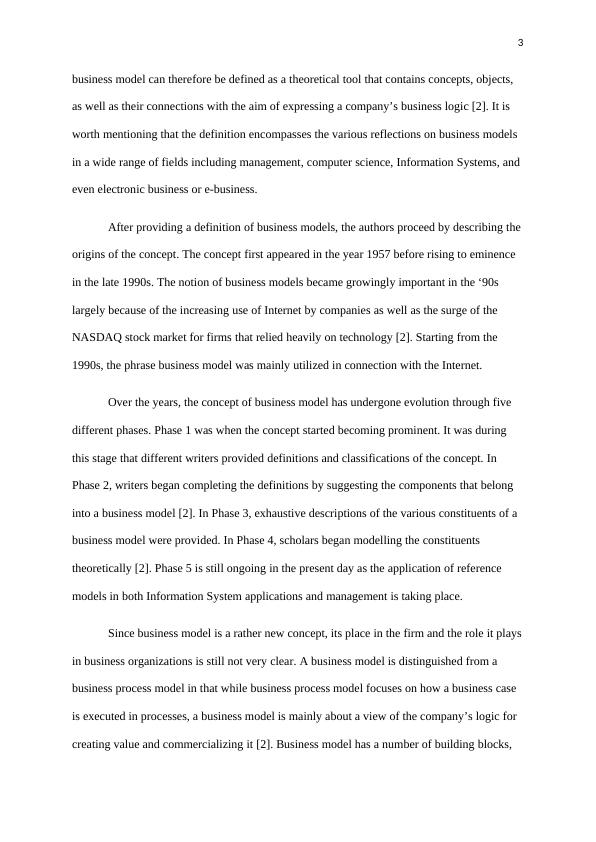Critique of Article
This paper aims to clarify the concept of business models, its usages, and its roles in the Information Systems domain.
6 Pages1368 Words72 Views
Added on 2023-03-20
About This Document
This article provides a critique of an academic paper titled 'Clarifying Business Models' by Alexander Osterwalder and colleagues. It discusses the intention, content, and conclusions of the article, highlighting the importance of business models in understanding and communicating a company's business logic. The article is relevant for students studying business and information systems.
Critique of Article
This paper aims to clarify the concept of business models, its usages, and its roles in the Information Systems domain.
Added on 2023-03-20
ShareRelated Documents
End of preview
Want to access all the pages? Upload your documents or become a member.
Big Data Mining Process and Application
|13
|3887
|124
Business Research Methodology - Understanding Business Models and Business Model Innovation
|18
|3619
|123
ERP with Internet of Things | Case Study
|15
|4577
|262
Article Critique: Red Tape Rising: Regulation in Obama’s First Term
|6
|934
|286
Reviewing Leadership Styles: Overlaps and the Need for a New Full-Range Theory
|6
|1146
|411
Reforming Theft: Taking without Consent - Critical Response
|12
|3762
|52



